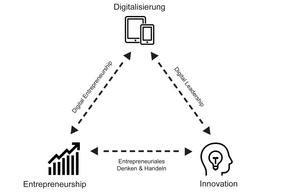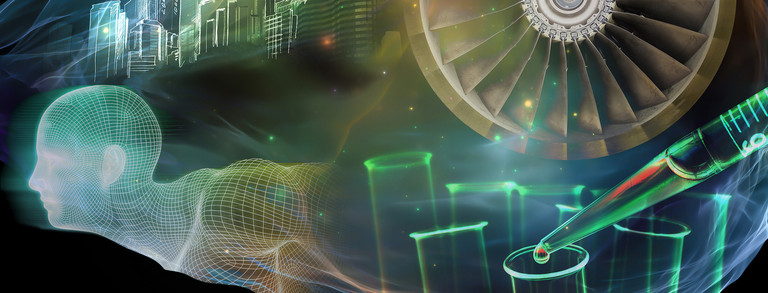Forschung der Projektpartner zu Coworking und New Work
In der folgenden Übersicht finden Sie Forschung, welche von den Projektpartnern zum Thema Coworking, Coworking Spaces und New Work veröffentlicht wurde.
- Vergara, I. S., Orel, M., & Capdevila, I. (2023). "Home office is the here and now". Digital nomad visa systems and remote work-focused leisure policies. World Leisure Journal. https://doi.org/10.1080/16078055.2023.2165142
- Capdevila, I. and Mérindol, V. (2022). Emergence of communities through interdependent dynamics of physical, cognitive and virtual contexts: the case of collaborative spaces. R&D Management. https://doi.org/10.1111/radm.12561
- Mariotti, I., Di Marino, M., Akhavan, M., Capdevila, I. (2022). The effects of COVID-19 on coworking spaces. In: Zimmermann, K.F. (Ed.), Handbook of labor, human resources and population economics. Springer, Cham. https://doi.org/10.1007/978-3-319-57365-6_322-1
- Garnier, C. & Capdevila, I. (2022). Making, hacking, coding: fablabs as intermediary platforms for modes of social manufacturing. Journal of Innovation Economics & Management. https://doi.org/10.3917/jie.pr1.0128
- Capdevila, I., (2022) Building communities in rural coworking spaces. In: Mérindol V. & Versailles, D. W. (Eds.), Open labs and innovation management: The dynamics of communities and ecosystems. Routledge. ISBN: 9781003125587
- Hensellek, S., Puchala, N. (2021). The emergence of the digital nomad: A review and analysis of the opportunities and risks of digital nomadism. In Orel, M., Dvouletý, O., Ratten, V. (Eds.), The flexible workplace. Human Resource Management. Springer, Cham. https://doi.org/10.1007/978-3-030-62167-4_1
- Mérindol, V., Aubouin, N. & Capdevila, I. (2021). Combiner confiance résiliente et réflexive, hiérarchie formelle et prix au sein des communautés : le cas des open labs. Management International / International Management / Gestiòn Internacional, 25, 184–205. https://doi.org/10.7202/1088145ar
- Orel, M., Dvouletý, O., & Ratten, V. (2021). The flexible workplace: Coworking and other modern workplace transformations. Springer Cham. https://doi.org/10.1007/978-3-030-62167-4
- Appel-Meulenbroek, R., Weijs-Perrée, M., Orel, M., Gauger, F., & Pfnür, A. (2020). User preferences for coworking spaces; a comparison between the Netherlands, Germany and the Czech Republic. Review of Managerial Science, 15, 2025 - 2048. https://doi.org/10.1007/s11846-020-00414-z
- Boutillier, S., Capdevila, I., Dupont, L. & Morel, L. (2020). Collaborative spaces promoting creativity and innovation. Journal of Innovation Economics & Management, 31, 1-9. https://doi.org/10.3917/jie.031.0001
- Boutillier, S., Capdevila, I., Dupont, L. & Morel, L. (2020). Espaces et nouvelles formes d’organisation du travail créatif. Innovations, 61, 5-13. https://doi.org/10.3917/inno.061.0005
- Orel, M., Dvouletý, O. (2020). Transformative changes and developments of the coworking model: A narrative review. In: Ratten, V. (Ed.), Technological progress, inequality and entrepreneurship. Studies on entrepreneurship, structural change and industrial dynamics. Springer, Cham. https://doi.org/10.1007/978-3-030-26245-7_2
- Aubouin, N. & Capdevila, I. (2019). La gestion des communautés de connaissances au sein des espaces de créativité et innovation: Une variété de logiques de collaboration. Innovations, 58, 105-134. https://doi.org/10.3917/inno.058.0105
- Capdevila, I. (2019), "Joining a collaborative space: is it really a better place to work?", Journal of Business Strategy, 40(2), 14-21. https://doi.org/10.1108/JBS-09-2017-0140
- Orel, M. (2019). Coworking environments and digital nomadism: balancing work and leisure whilst on the move. World Leisure Journal, 61(3), 215-227. http://dx.doi.org/10.1080/16078055.2019.1639275
- Orel, M. (2019). Supporting work-life balance with the use of coworking spaces. Equality, Diversity and Inclusion: An International Journal, 39(5), 549-565. https://doi.org/10.1108/EDI-01-2019-0038
- Orel, M. (2019). Guidebook: The Social Innovators Model: From workspace to collaborative ecosystem.
- Orel, M., & Almeida, M. D. M. A. (2019). The ambience of collaboration in coworking environments. Journal of Corporate Real Estate, 21(4), 273-289. https://doi.org/10.1108/JCRE-12-2018-0050
- Mérindol, V., Gallié, E. & Capdevila, I. (2018). Technology-transfer offices and academic open labs as different types of organizational intermediaries in science-society relationships. Gestion 2000, 35, 125-144. https://doi.org/10.3917/g2000.352.0125
- Capdevila, I. (2017). A typology of localized spaces of collaborative innovation. In: van Ham, M., Reuschke, D., Kleinhans, R., Syrett, S., & Mason, C. (Eds.), Entrepreneurial neighbourhoods – towards an understanding of the economies of neighbourhoods and communities. Edward Elgar. http://dx.doi.org/10.4337/9781785367243.00013
-
Capdevila, I. (2017). The local and global knowledge dynamics through communities. The case of communities of makers and social entrepreneurs in Barcelona. Management International / International Management / Gestion Internacional, 21(3), 59-70. https://doi.org/10.7202/1052765ar
- Capdevila, I. (2016). Une typologie d’espaces ouverts d’innovation basée sur les différents modes d’innovation et motivations à la participation. Gestion 2000, 33, 93-115. https://doi.org/10.3917/g2000.333.0093
- Capdevila, I. (2015). Les différentes approches entrepreneuriales dans les espaces ouverts d’innovation. Innovations, 48, 87-105. https://doi.org/10.3917/inno.048.0087
-
Capdevila, I. (2014). Coworking spaces and the localized dynamics of innovation. The case of Barcelona. SSRN Electronic Journal. https://doi.org/10.2139/SSRN.2502813
-
Cohendet, P., Grandadam, D., Simon, L., & Capdevila, I. (2014). Epistemic communities, localization and the dynamics of knowledge creation. Journal of Economic Geography, 14(5), 929–954. http://dx.doi.org/10.1093/jeg/lbu018
- Orel, M., & Kubátová, J. (2013). Coworking as a model for conscious business. Journal of Global Responsibility, 10(3), 257-270. https://doi.org/10.1108/JGR-11-2018-0068


